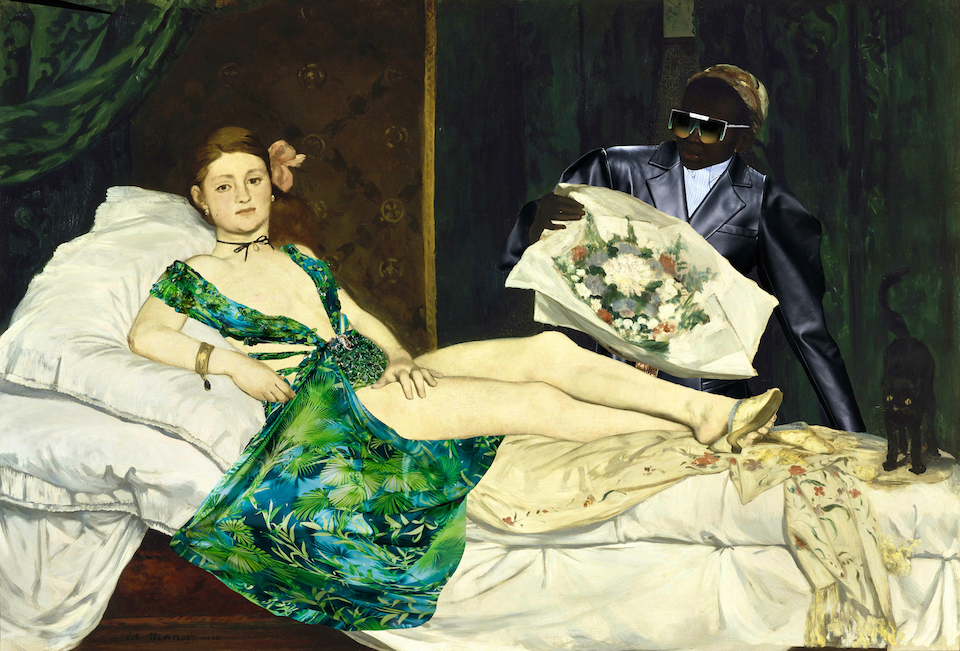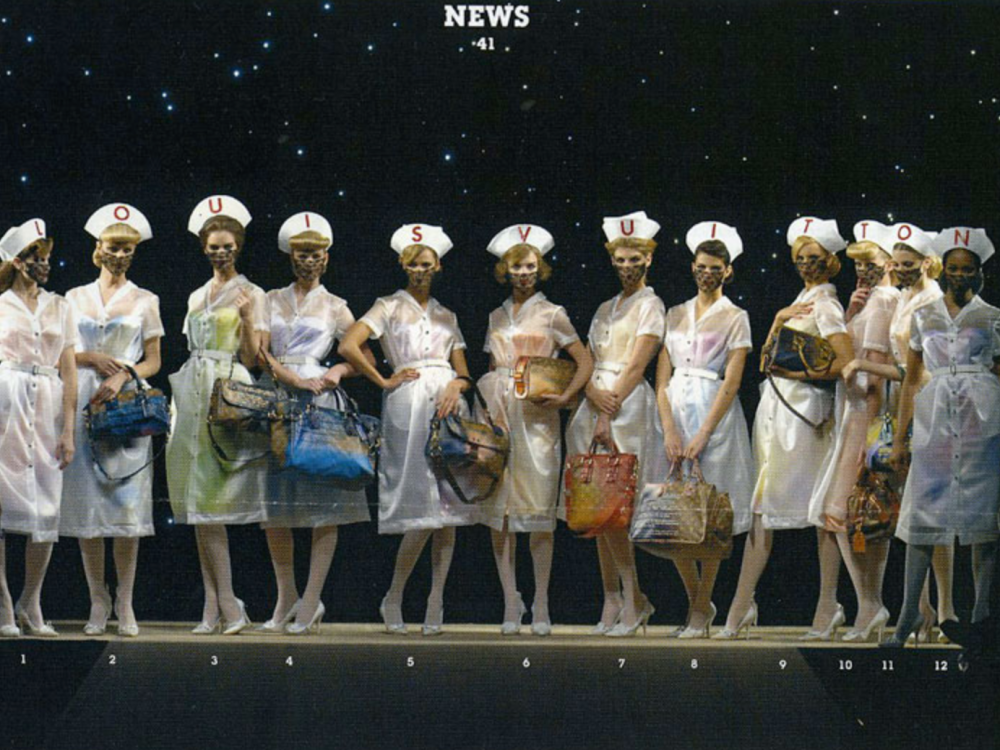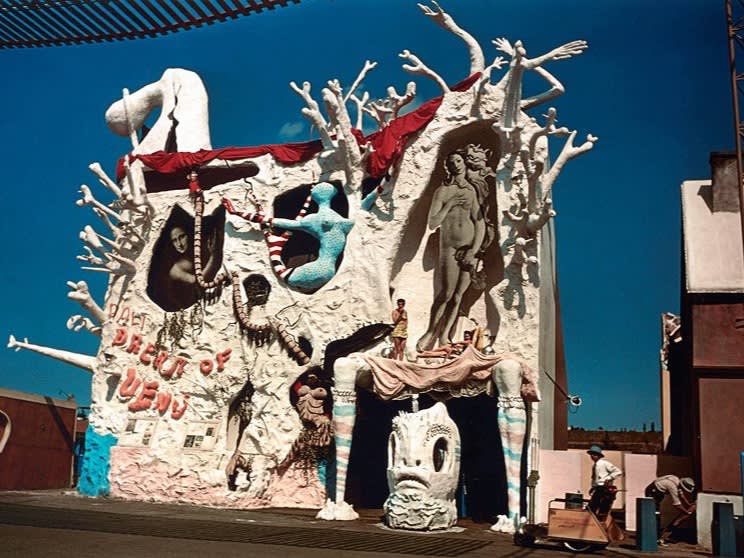
Marcel Duchamp, “Fountain.” 1917.
While we tend to think of art as a sensory experience, we know that art hits elsewhere, most obviously in how we feel. But it can also shift what and how we think. When art leans into that realm, we call it conceptual art: the art lies not just in what you see but in how you make sense of things. Which can unsettle the familiar guardrails of the art experience—and your position as viewer.
From What We See to What We Think: Duchamp’s “Fountain”
In 1917, Marcel Duchamp famously contributed his new work, Fountain, to an exhibition of the Society of Independent Artists: a urinal. It wasn’t something he’d sculpted from, well, from anything. It was something he’d purchased (so the story goes) from a hardware manufacturer in New York City, J. L. Mott Iron Works. To make matters more complex for viewers, critics, and said Society of Independent Artists itself, the signature on the piece read: “R. Mutt.” How is one to make sense of this?
Well, we tend to view art as something that we perceive with our senses: that, there—that painting, dance, meal, concert—sure is beautiful, moving, surprising, perplexing. But does art start and stop there, with our senses?People often talk about art moving them to tears, to revelation, to joy. So it’s safe to assume we can all agree that the experience of art exceeds what we see, hear, touch, taste, smell.
Where, then, is the site of Duchamp’s Fountain? For a moment, perhaps, you think: Huh, I never noticed that urinals are rather beautiful. Look at the porcelain’s curve, the geometry of the triangular drain. It’s not without a certain voluptuous visual appeal, for sure. But then you think: No, that’s ridiculous. In this moment, as you run fast and hard into the limits of aesthetic judgement, you find yourself moving from the sensory to the (dis)cognitive, from the aesthetic to the conceptual, as you wonder: How do I make sense of this? What is it even doing in this art exhibit? Voilà, conceptual art.
So: what is that urinal doing there? How are we to make sense of it?

Claude Monet, “Water Lilies,” 1914–1926.
Let’s take a more traditional piece: Monet’s Water Lilies. Standing before them is an immersive experience—intense, vibratory, a seething of life itself. Well, Fountain is moving, too, albeit in a different way. Standing before it, it’s hard not to giggle, perhaps even guffaw. Fountain is hilarious, adolescent, a little twist in the sense making process that is never mean spirited. It’s a smile amid the seriousness of “art.”
What’s great about Fountain being conceptual is that your smile doesn’t end when you walk away from it. After all, the work doesn’t just happen while seeing it; it keeps on happening as long as you think about it. You may wake up laughing years later as you picture that signed urinal on display in that exhibit.
No doubt, Duchamp was up to more than generously proffering a smile. The “readymade,” as it would come to be called, doesn’t just shift how we make sense of art, it shifts the very place and posture of the artist—and of the creative process. In our heads, we often paint the painter as a lone genius—a master, one might say, though it seems odd to do so today. In purchasing the urinal, Duchamp tosses that image aside, transforming the artist from creator to curator. His taste lies not in his craftsmanship but in his taste, his decision making. Which displaces the artist as master—hence Duchamp signed his work otherwise: “R. Mutt.”
From Infinity to Scarcity: “EtherRock”

Anonynous, “EtherRock, “ 2017. As you can see, the few for sale are asking for millions of USD.
In 2017, during the nascent days of crypto collectibles, someone who remains anonymous, dropped EtherRock. Taking a clip art image, the artist created 100 such Ether Rocks—that is, 100 clip art JPEGs with a smart contract authenticating each and facilitating its transactions. Like an IRL artist’s print, the set is limited: there will only ever be 100. Each enjoys a slight variation in color but there is nothing of note about the images themselves. As you can read on the project’s site, which in many ways describes all art:
“These virtual rocks serve NO PURPOSE beyond being able to be bought and sold, and giving you a strong sense of pride in being an owner of 1 of the only 100 collectible rocks :)”
Wherein lies the art, you still wonder? Art creates borders, instructing us to see this, not that. EtherRock takes the infinitely reproducible—not only is it digital, it’s clip art!—and draws a boundary: inside is art, outside is not. It may be the most elemental artistic gesture, to stipulate a limit where there wasn’t one, to say this, not that. EtherRock takes on the seemingly impossible task of transforming that which is infinitely reproducible into something unique—and scarce. Channeling the miracle of the blockchain, EtherRock creates singular identities for the inherently interchangeable. And, in so doing, creates value where there was once none. (A lot of value, in fact. 777 ETH?!?)
The Art of Uncertainty
Monet in his studio. Someone looking at his “Water Lilies” in a museum. This is the familiar architecture of the art experience: artist > art > viewer. Everyone is certain of their place.Monet in studio
We tend to view the artist as standing before the world, choosing a medium, and expressing themselves. It’s a well worn architecture of artist and viewer. We know our roles. We walk in a museum, we know what we’re doing there, what we’re looking for, what to expect and what’s expected of us.
But what both Fountain and EtherRock do is make that self-certainty not so certain. By folding the very discourse of art — how we define, experience, sell, and display it — into the work, they throw our posture into question. Art becomes a material itself to be used just as one might use paint or code, thereby displacing our familiar position as viewer. When we go to view this art, we’re not quite sure how to look, how to consider it.
These, too, are images of the artist as “Fountain” and “EtherRock” deploy a very different architecture of the art experience.
They remove certainty— certainty about the role of the artist, the definition of art and, perhaps more profoundly, certainty of our status as viewer. Standing before Monet’s Water Lilies, you know where you are and why that glorious painting is in the museum. You know precisely what’s asked of you. Sure, hopefully you’ll be rocked by some work, be emotionally moved, perhaps forever transformed. But your position as viewer remains secure. Looking at Fountain and EtherRock, on the other hand, you’re not even sure what you’re seeing, why you’re seeing it, how to make sense of it. Your position is uncertain.
The Art of Critique
Are these pieces absurd? Absolutely. Funny? We think so. Are they art? As Marshall McLuhan says, Art is anything you can get away with. While McLuhan may be the “true author” of that quote, neither he nor Andy Warhol — its oft cited source — cared much for “true authors” so what difference does it make who said it?
For sure, one possible function of art is to be aesthetically engaging. It’s great to be moved by the beauty, intensity, perhaps even the ugliness of an image. What these conceptual artists do is lean into a different function of art: to critique, to show us life’s hidden terms, to change how we think (which McLuhan argued is precisely the function of art: to reveal the invisible environments in which we all live, that coerce and define our lives).
Fountain and EtherRock give us a different kind of art experience. We may not fall down before them speaking in tongues as divine truth emanates from them (though we may….). But they give us another sort of delight that is undeniably profound—the experience of thinking anew as we’re nudged from our all too familiar assumptions. And both works do it with a deadpan cheeky smile, to boot.


